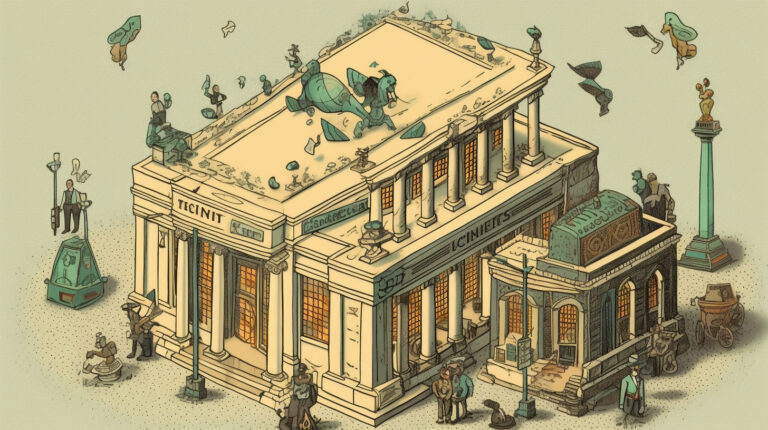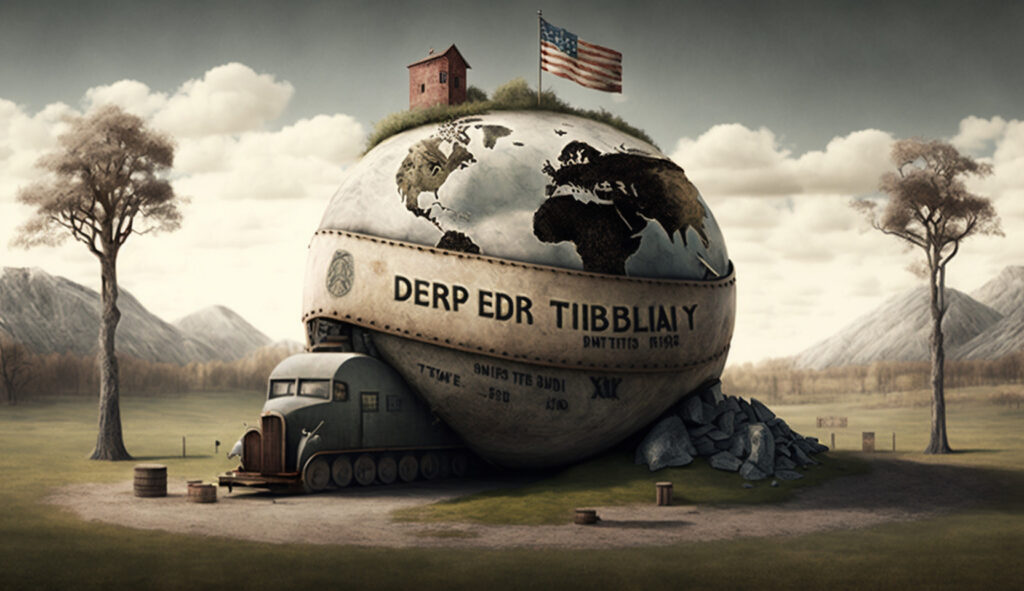
- Eugene Steiner
- Updated: April 20, 2025
A central bank is an institution that controls a country’s monetary system and monetary policy. For example, European Central Bank or Federal Reserve System in United States serves as the main authority responsible for issuing and managing a currency. In an ideal world, central banks operate independently from the government to maintain credibility and avoid political influence. Their primary goals include gaining price stability, aiding steady economic growth, and maintaining financial stability within a country. They play a crucial role in shaping monetary policies and taking measures to ensure the stability of the financial system.
Why Should We Care about the Actions of Central Banks?
The actions of the central bank play a crucial role in shaping the overall economy. Let’s explore why this is the case.
Firstly, the decisions of a central bank regarding monetary policy have a direct impact on various economic factors. The central bank influences borrowing costs, investment levels, and consumer spending by adjusting interest rates and managing the money supply. In other words, it affects how much it costs to borrow money, how much companies invest, and how much people spend on goods and services. These factors together shape the direction of economic growth and stability.
Moreover, the central banks play a vital role in maintaining financial stability. They control and regulate the financial sector to ensure the proper operation of financial institutions. This helps prevent failures and crises within the financial system, which can have grave consequences for the broader economy.
In addition, the central banks manage the currency of a country in question and this management has consequences for international trade. Through interventions in the foreign exchange market, the central bank can influence exchange rates. This, in turn, impacts the competitiveness of exports, the costs of imports, and the overall balance of trade.
To recap, the central bank’s actions have a deep impact on the economy’s path. By adjusting interest rates, managing the money supply, ensuring financial stability, and influencing exchange rates, the central bank shapes key aspects of economic growth, stability, and international trade. Understanding these dynamics is vital for companies, investors, and individuals to make informed decisions and navigate the changing economic climate.
How Did Central Banks Evolve?
Central banks have a long history that dates back several centuries. Let’s take a quick journey through their evolution. In the 17th century, central banking began with institutions like the Bank of Sweden, founded in 1668.
These early central banks focused on issuing and managing currency to ensure monetary stability. As time passed, central banks took on broader duties. In the 19th century, they started regulating commercial banks and having an impact on interest rates to manage inflation and promote stability.
A significant turning point occurred in the early 20th century with the creation of the Federal Reserve System in the United States in 1913. This decentralized model had an effect on central banking practices worldwide.
During the Great Depression of the 1930s, central banks faced new challenges. They had to stabilize economies, manage financial crises, and provide liquidity to struggling banks.
Post-World War II, central banks became more active in managing monetary policy. They used tools like open market operations, reserve requirements, and interest rates to influence money supply.
In recent decades, central banks have faced globalization, financial innovation, and the need to maintain stability in a changing economic climate. They have played a crucial role in dealing with crises, such as the 2008 global financial crisis and the COVID-19 pandemic.
Today, central banks continue to adapt their policies and strategies to address current economic and financial issues. They aim to maintain price stability, promote economic growth, and ensure the stability of the financial system.
What Are Monetary Policy and Other Roles and Objectives of Central Banks?
The roles of a central bank can vary from country to country, but some standard functions include:
- The responsibility for drawing up and implementing monetary policy. It includes controlling the money supply in the economy and setting interest rates. They use various tools, such as open market operations, reserve requirements, and discount rates, to achieve their goals.
- Central banks also play a critical role in maintaining financial stability. They do it by controlling and regulating the banking system, monitoring systemic risks, and providing emergency liquidity to financial institutions in times of crisis.
- They are responsible for issuing and regulating the country’s currency. Their task is also to maintain the currency’s value by controlling inflation.
- Central banks conduct economic research and analysis to inform their policy decisions and to give an idea of economic trends and developments.
- Central banks often represent their countries in international financial institutions and take part in global economic and financial policy discussions.
Overall, the role of a central bank is to promote monetary and financial stability, support economic growth and development, and protect the interests of the public.
Central banks have many vital roles in modern economies. They are the only ones who can create and supply currency. Central banks also act as the bank for the government and other banks, providing funds to banks facing financial issues. They are responsible for maintaining the stability and value of their country’s currency and setting monetary policies. They control and set standards for the banking system and manage their country’s foreign currency and gold reserves.
As we mentioned in our article about money, such commodities as gold and, least often, silver, used to be the basis for money. We strongly encourage you learn more about the nature of money by reading our previous article regarding money.
We will continue to tackle the subject at hand – the roles and functions of central banks. Now, where were we? Early banks used to issue promissory notes that people could exchange for a certain quantity of precious metals. And they could use these promissory notes to buy products and services, thus they acted as a predecessor of modern money. Nowadays, the law authorizes public institutions, usually central banks, as the only ones authorized to supply a currency. In the past, central banks’ monetary policy involved issuing money that could be exchanged for a specific amount of gold, following the gold standard. Please feel free to explore the subject of the gold standard on your own.
Most major economies stopped following this standard in the second half of the 20th century (See “Suspension of the Bretton Woods Agreement“). Today, money in major economies is not exchangeable for anything else, but people consider legal tender as something to accept in exchange for goods and services. Money that we cannot exchange for anything else is called Fiat Money (Fiat money is materially worthless, but has value simply because people collectively agree to ascribe a value to it.). Its value comes from a government decree.
In other words, a physical commodity does not back fiat money; instead, the basis of its value is the trust people have in the government and the central bank that issues and manages it. We use fiat money as legal tender for all transactions and must accept them by law to settle debts and taxes. Most modern currencies are fiat money. When fiat money is widely accepted and maintains its value over time, it can also function as a unit of account.
However, the institution that supplies this money becomes even more significant in a fiat money system, as it can expand the supply of money indefinitely. As a result, central banks have a critical role in modern economies as the sole suppliers and protectors of the value of their fiat currencies. They are responsible for maintaining trust and confidence in their currencies, vital for economic stability. Central banks are not only the suppliers and guardians of their currencies. They also play various other roles, making them central to the economic life of a country.
They act as bankers to the government and other banks and as lenders of last resort to banks needing liquidity. This role helps prevent bank runs, although recent financial crises have shown that avoiding them is not always possible.
In addition to these roles, central banks have the task of supervising the banking system. Although, in some countries, this responsibility falls to a different authority.
However, one of the least recognized roles of central banks is their function in the payments system, as millions of financial transactions occur daily in modern economies. They are also responsible for managing their country’s foreign currency and gold reserves, with the latter still held in significant quantities by central banks worldwide (central banks worldwide still have large amounts of such foreign currency and gold reserves). Th sale of significant gold reserves by central banks could potentially depress gold prices, highlighting their influence on global financial markets.
In addition to serving as the monopoly supplier of a country’s currency, central banks have various other responsibilities. However, the most high-profile role of central banks is the operation of a country’s monetary policy. It includes influencing the quantity of money and credit in the economy. While not all central banks are responsible for banking supervision, they usually assume most of these roles and responsibilities.
If you liked this article you may want to check out other articles in this series: Learn What Money Is: Its Nature and Functions or Currency Regimes: What Are the Main Types?



